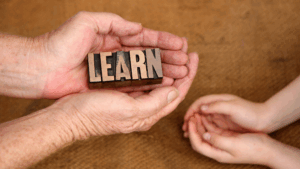In the world of driver education, technical skills have traditionally taken centre stage—gear changes, clutch control, hazard awareness. But if we zoom out, a deeper truth emerges: the way a learner thinks and feels behind the wheel matters just as much as how they steer or brake. This is where the power of positive thinking transforms not just learning outcomes, but the very behaviours that underpin safer driving.
As driving instructors, we’re in a privileged position to influence more than just skill—we can shape belief systems, shift emotional states, and anchor behaviours that carry on long after our students pass their test.
Why Thoughts, Feelings, and Beliefs Drive Behaviour
Behind every behaviour lies a thought. Behind that thought is often a belief—formed through past experiences, reinforced by emotion. A learner might approach a complex roundabout and think, “I can’t do this,” triggering anxiety, which leads to hesitation, missed cues, or even panic braking. That’s not a skill issue—it’s a behavioural loop.
Our goal as instructors should be to interrupt negative thinking patterns and help learners replace them with empowering, grounded thoughts. “This looks tricky, but I’ve handled worse,” for example, can create calm, focus, and smoother execution.
This behavioural loop—thoughts → feelings → behaviours—is at the heart of change. And anchoring our students in positive, constructive beliefs is how we build capable, resilient drivers.|

Anchoring Positivity in Every Lesson
Anchoring is a concept used in psychology and coaching. It’s the idea of tying a specific thought or emotion to an experience. In driving lessons, this means highlighting moments of success and embedding those experiences as part of the learner’s identity.
Let’s say a pupil nails a difficult manoeuvre they previously struggled with. Don’t just move on—pause. Celebrate it. Ask how it felt. Ask them to explain what they did well. Help them replay the success like a highlight reel. That moment becomes more than a tick box—it becomes part of who they are becoming as a driver.
This reflective practice turns fleeting moments into lasting mental shifts. “I did it” becomes “I can do it,” which becomes “I am a competent driver.”

Celebrating the Wins—Why It Works
Small wins matter. In fact, they’re the cornerstone of long-term confidence. Whether it’s a smooth gear shift, accurate mirror use, or simply managing nerves better than last time, every success should be noticed and reinforced.
Why? Because success breeds motivation. When students feel like they’re progressing, they’re more likely to engage, more likely to listen, and—crucially—more likely to believe in themselves.
This isn’t about hollow praise or gold stars. It’s about helping learners emotionally connect with what success feels like. When students leave a lesson feeling accomplished, they’re more eager to return and less likely to dwell on mistakes.

Rewiring the Mindset: Replay the Positives
A powerful technique you can use as an instructor is what I call the “highlight reel.” Encourage learners to mentally replay a recent success—like they’re watching a video.
Ask:
- “Can you see yourself doing it right?”
- “How did it feel?”
- “What helped you succeed that time?”
By reinforcing these mental images, students are not just recalling—they’re rewiring. They’re turning effort into identity.
Pair this with visualisation before lessons or tests: “Imagine approaching that junction confidently. Picture it going smoothly.” These visual prompts prepare the brain for success and reduce the stress response in the moment.
Reflective Thinking: Turning Mistakes Into wins
Of course, not every moment in a lesson will be a win. That’s why self-reflection is essential. When mistakes happen, guide learners to ask:
- “What was I thinking and feeling at that moment?”
- “Why did I react that way?”
- “What belief might have triggered that?”
- “Could there be another way to interpret what happened?”
These questions help uncover limiting beliefs—like “everyone’s judging me” or “I always get this wrong”—and replace them with growth-oriented alternatives. Over time, students learn to recognise unhelpful thinking and choose better responses, even under pressure.

Using Behavioural Change Models in Lessons
The Theory of Planned Behaviour offers us a roadmap. According to the model, behaviour is shaped by:
- Attitudes: What they think about the behaviour.
- Norms: What they think others do or approve of.
- Perceived control: How much autonomy or skill they believe they have.
- Self-identity: How the behaviour aligns with their values.
- Emotions: Both in-the-moment and anticipated feelings.
- Environmental barriers or facilitators.
Let’s break it down for your pupils.
- Attitudes: Is driving safely “boring” or “clever”? Challenge their assumptions.
- Norms: Are they trying to impress friends, or stay aligned with family values?
- Control: Do they feel confident managing stress or distractions?
- Identity: Do they see themselves as a safe, responsible driver?
- Emotion: How does nervousness or excitement affect their driving decisions?
- Barriers: Are they prepared for time pressure, peer influence, or phone distractions?
Discussing these openly helps learners become aware of what really drives their decisions—and what to do differently.

Turning Lessons Into Behaviour Labs
Driving lessons are the perfect setting to experiment with behavioural change. Here’s how:
- Talk About Real-Life Scenarios
Discuss driving after emotional events, like go-karting or a football match. Ask how those emotions might affect speed, awareness, or risk-taking.
- Use Thought Disruptors
Ask pupils to name films backwards or solve simple puzzles while driving. Reflect afterward: “What happened to your driving focus?” It’s a safer way to explore how distractions impact behaviour.
- Set Up ‘What If’ Situations
“What if you’re late to pick up a friend?” “What if someone tailgates you?” Use these moments to practice emotional regulation and rational decision-making.
Creating a Positive Learning Climate
The most successful driving instructors aren’t just experts in vehicle control. They’re climate setters—they create an atmosphere where learners feel safe, supported, and inspired.
Here’s how you can create that climate:
- Use growth language: “You haven’t mastered this yet,” is more powerful than “That was wrong.”
- Encourage curiosity: Turn errors into opportunities: “What can we learn from that?”
- Be emotionally present: Show warmth, humour, patience, and belief in their ability to improve.
- Be authentic: Share your own driving missteps. It humanises the process.
When learners feel safe to try, fail, and try again, they begin to thrive.

Creating Capable, Confident, and Conscious Drivers
Driving lessons are more than a technical right of passage—they’re a behavioural journey. By teaching learners to understand and manage their thoughts, beliefs, and emotions, we’re not just preparing them for a test. We’re preparing them for life on the road.
Positive thinking isn’t a bonus—it’s a foundation. When we celebrate wins, anchor empowering beliefs, and challenge limiting narratives, we build drivers who are not only skilled—but self-aware, adaptive, and safe.
Let’s redefine what it means to “pass.” Let’s aim for drivers who don’t just know the rules—but who believe in their own ability to follow them, manage themselves, and respect the responsibility that driving brings.
It starts with one thought.
